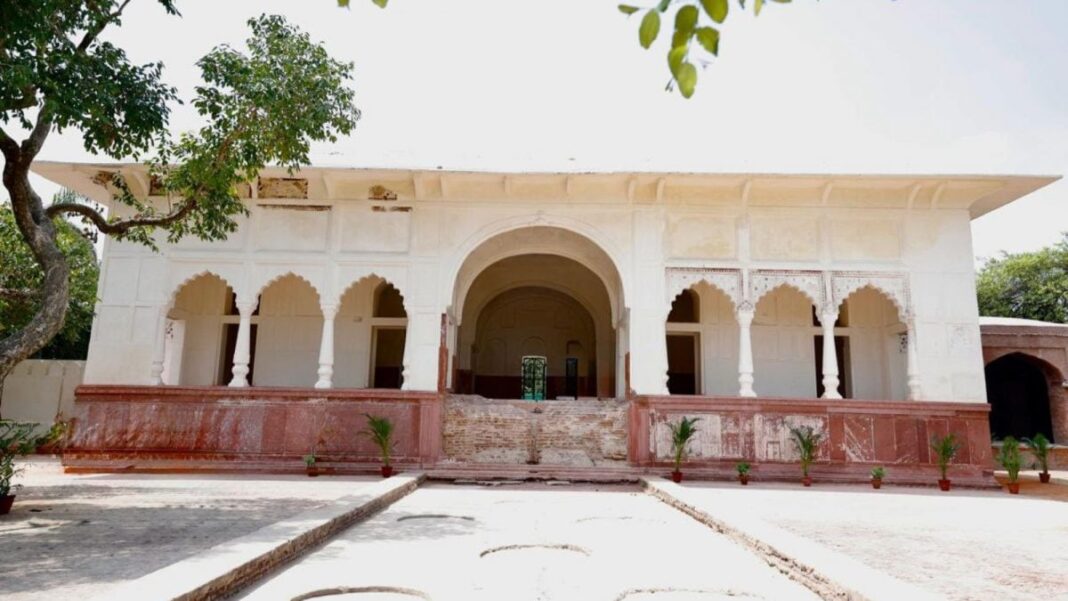Last Updated:
The 370 year old Sheesh Mahal, located in Delhi’s Shalimar Bagh, has reopened to the public after a meticulous restoration process.
Union Culture Minister Gajendra Singh Shekhawat said that the park, including Sheesh Mahal, holds a rich history and has been a matter of pride for Delhi for over 400 years. (Photo: X/CMODelhi)
Delhi’s long-forgotten jewel, the Sheesh Mahal, has been brought back to life. After decades of disrepair and obscurity, the 17th-century Sheesh Mahal, tucked within the historic lanes of Shalimar Bagh, North Delhi, reopened to the public on July 2, 2025, following a meticulous restoration. Built in 1653 under the reign of Emperor Shah Jahan, this once-royal retreat now stands as a shining symbol of Delhi’s Mughal history legacy.
A Palace Reborn: From Ruin to Radiance
The transformation began after a pivotal site visit by Delhi’s Lieutenant Governor Vinai Kumar Saxena in early 2024, which spotlighted the Sheesh Mahal‘s deteriorating condition. That moment of reckoning led to a powerful collaboration between the Archaeological Survey of India (ASI) and the Delhi Development Authority (DDA). While ASI took charge of architectural restoration, the DDA revived the surrounding gardens, resurrecting the Char Bagh-style layout, a cornerstone of Mughal landscape design.
Crafting the Past with the Tools of Tradition
What sets this restoration apart is its commitment to authenticity. Conservationists used Lakhauri bricks, traditional lime surkhi, and organic binders like gud (jaggery), bael fruit, and urad dal paste – echoing the very methods Mughal artisans once relied on.
More than just a palace, Sheesh Mahal has witnessed history unfold – Aurangzeb’s first coronation took place here in 1658, making its preservation all the more significant. The palace was once part of Aizzabad Garden, reportedly created in memory of Aizzun-Nisha Begum, and originally bore the poetic name Shalimar, or ‘abode of pleasure.’
A Cultural Destination Emerges
The reopened site now invites not just history enthusiasts but also the community. Two thoughtfully curated additions include The Readers’ Café Corner (a literary space for book lovers and cultural enthusiasts) and Café Shalimar (an eatery for casual visitors).
- Location :
Delhi, India, India
- First Published:



